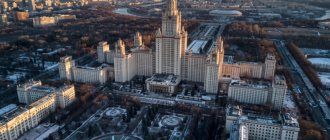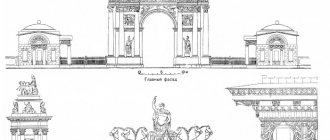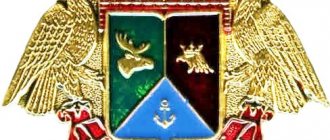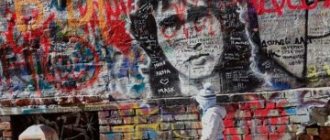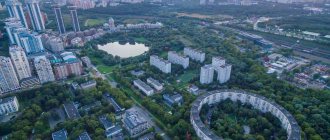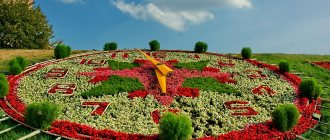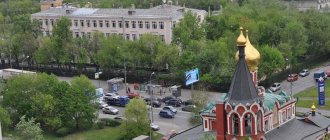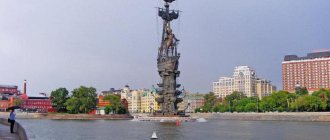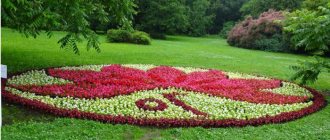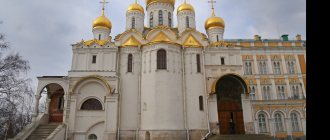Pashkovs
There is no reliable information about who was the architect of the mansion on Vagankovsky Hill. Indirect information indicates that the architecture and design are the work of the genius V.I. Bazhenov. The Pashkov House was built in 1786 for Pyotr Egorovich Pashkov. The owner of the house was the son of the orderly of Tsar Peter I. Yegor Ivanovich Pashkov was favored by the authorities and became rich after a successful case against the Siberian governor, Prince Gagarin, accused of separatism. Having become a member of the High Court and successfully exposing embezzlers, he was rewarded for his labors with the estates of those over whom he administered justice.
Son Peter, having received a considerable inheritance, quickly increased it, becoming the king of the distillery and tax farmer. Such activities were not encouraged among the nobility, and Pashkov became not just the first businessman, but also the first outcast of this magnitude in his circle. Being a vain man, he decided to show off and build a house that would shock the entire capital. He succeeded. Even at the stage of completion of work, the mansion became a landmark of Moscow, rumors swarmed around it, which later became legends.
Description
The plot allocated for the construction of the mansion has a complex shape. Pashkov himself, with great difficulty, bought land on Vagankovsky Hill, squeezing out many of his neighbors. The wide side of the plot faces Mokhovaya Street, where there is a large difference in height along the hillside; the land plot has the same length from Znamenskaya Street. Along the St. Nicholas Church, the land allotment makes a complex zigzag. The narrowest, wedge-shaped place was on the side of Starovagankovsky Lane.
The skillful use of the complex geometry of the site became one of the highlights of Pashkov’s house. The architect used the hillside as a pedestal for the mansion, providing it with an excellent view of the Kremlin and a guarantee against a likely slide to the foot of the hill. The entrance, convenient for carriages, was designed on a narrow side where there was no difference in elevation and overlooked the front porch and courtyard.
The solution was brilliant, but in this location the mansion ended up facing the Kremlin with its backyard. Despite all the splendor of the decoration, the façade was completely blank; the main staircases to Mokhovaya were built much later. The estate was surrounded by a high wrought-iron fence; it was separated from the house by a regular park with fountains and ponds, inhabited by strange birds.
How to get to Pashkov's house
soon as I typed “ excursion to Pashkov’s house ” into the search engine, several offers from different companies immediately popped up. My dream turned out to be easy to achieve.
At first I settled on . The cost of the excursion is 1000 rubles. But then I looked at other offers and chose the cheapest one - for 700 rubles - on the Lenin Library . The Pashkov House is currently used as one of the buildings of the Lenin Library, and who else but the owners of this building can organize excursions.
On the website https://leninkatour.ru/ekskursii/ I booked 2 places for a convenient date. Soon the girl called me back and said that the session I had signed up for would not take place and offered to choose another one. “Okay, I’ll think about it and call you back,” I answered.
And one day I had free time, I called the girl and asked if it was possible to show up for the excursion at 3 o’clock in the afternoon. - Yes, of course, - group meeting - near the main entrance at 5 minutes to 3. Give the money at the meeting.
So everything turned out to be very simple. At the appointed time, my husband and I approached the main entrance to Pashkov’s house. About 12 people were already standing there waiting.
While we were waiting, we looked at the closest “neighbors” of Pashkov’s house. Directly opposite the estate stands the Shamshina apartment building, designed by Shekhtel and Blagoveshchensky.
And directly adjacent to Pashkov’s estate is the low church of St. Nicholas in Stary Vagankovo. From the sign on the church we learned that the church was built in 1541, and that Gogol came here to pray.
The church was open and we entered it.
As the guide later told us, there used to be about 40 churches on Vagankovsky Hill. Subsequently, most of them were destroyed. When laying Starovagankovsky Lane, the left side chapel in honor of the 40 Martyrs of Sebaste was cut off near the church. The fence along the alley was made from the stones of this destroyed chapel.
The church itself has a very beautiful ceiling. The church is small and cozy. The right side chapel has been preserved; it is dedicated to Sergius of Radonezh.
The guide came out at the appointed time. Collected money from those who did not pay in advance. We all came here from a variety of companies: some bought tickets for 1000, others for 700 (pensioners - for 400), and we all got on one excursion. There were 16 of us in the group.
First we went to the territory of the estate, and for some time the guide told us about the history of this house and its owner.
Architecture
Pashkov's house in Moscow aroused admiration in all layers of society. On holidays and folk festivals, crowds of citizens flocked to the openwork lattice of the garden to gaze at the overseas birds, a beautiful garden decorated with fountains. Now a sidewalk has been laid in front of the house, the garden has been abolished - due to its territory, the roadway and sidewalk have significantly expanded.
The architecture of Pashkov's house is a striking example of Russian classicism. The building is built according to a three-part principle, characteristic of the classical school - a belvedere rises above the central building, with symmetrical wings on the sides. The composition is united by a portico with columns and side galleries. The unity of the structure is emphasized by the general themes of the decor. Now the building is white, but according to some surviving data, when in Pashkov’s possession, the mansion was orange.
The facade of the house from the front entrance is made in the style of a country estate and does not look so pompous, but no less impressive. Guests are greeted by a forged gate in the form of a triumphal arch. Its top is crowned with lush garlands of laurel leaves carved from stone; this leitmotif has become the main decor adorning the mansion. The frontal composition of the Pashkov house, from the side of Mokhovaya Street, resembles in its construction the Kremlin wall, to which the rear facade faces. These two urban development objects are strictly parallel and once framed the valley of the Neglinnaya River.
Pashkov House
Photo: lana1501 / photobank “Lori”
Mikhail Bulgakov in “The Master and Margarita” called the house of captain-lieutenant of the Semenovsky Life Guards Regiment Pyotr Pashkov one of the most beautiful mansions in Moscow. Researchers have argued for a long time who was the author of the building. Among the versions are Matvey Kazakov and Nikola Legrand, but it is most likely that Vasily Bazhenov built Pashkov’s house.
The architect designed a typical city estate - a central building with two side wings and a front courtyard open towards the entrance. At the same time, Bazhenov came up with an original move - he placed the entrance itself on the side, in the alley, and not on the side of the main facade.
According to some sources, the mansion was originally orange and its dome was crowned with a Roman statue. However, today we see not exactly the Pashkov house that Bazhenov built: the building was badly damaged after the Moscow fire of 1812. During the restoration, the architect Osip Bove abandoned the use of the statue, replaced the Corinthian columns with Ionic ones and repainted the building white. At various times, the Moscow Noble Institute, the Fourth City Gymnasium, and the Rumyantsev Museum were located in Pashkov’s house. Today the building belongs to the Russian State Library. Manuscripts, sheet music and cartographic publications are stored there.
Home for enlightenment
During the War of 1812, Pashkov's house was devastated and suffered from a fire; the roof and belvedere were completely destroyed. The family archive, which supposedly contained the drawings and designs of the architect Bazhenov, also burned down in the Napoleonic fire. The restoration took a long period, only by the end of the 1830s the repairs were completed. The newly rebuilt belvedere was significantly different from the original one and bore the stamp of the late period of classicism. The architect of the restoration work was presumably Osip Bove.
In 1839, Pashkov's house was sold by the heirs to the city treasury in favor of Moscow University. Initially it housed a noble institute; a little later the premises were transferred to the city gymnasium. Since 1861, the mansion has become a refuge for the Rumyantsev Museum. And in 1862, in addition to the museum halls, the public Rumyantsev Library was added, which also housed the collection of books from Moscow University.
The opening of the halls took place with great celebrations; the imperial family donated to the city museum some of the books from their personal libraries, a collection of decorative and applied arts, and paintings. From 1913 to 1915, according to the project of L. Shevyakov, a global restructuring of the internal space of the central building of the mansion was carried out. Thanks to this, the library now has a two-light reading room with 300 seats.
After the fire
Pashkov's house suffered greatly during Napoleon's invasion: the wooden belvedere and galleries completely burned down. From 1815 to 1818, the former appearance of the house was restored by the famous architect Osip Bove. In 1839, Pashkov’s heirs went bankrupt, then the treasury bought the house from them for the University Noble Institute, and since 1853 the Moscow 4th gymnasium was located here.
Pashkov house. (wikipedia.org)
In 1831, a museum was created in St. Petersburg based on the collections and library of Count Rumyantsev. However, due to the fact that the state did not provide him with sufficient material support, the idea of moving the museum to Moscow soon appeared. And so in May 1862, the Moscow Public and Rumyantsev Museums opened their doors in the Pashkov House. In the same year, the Rumyantsev Public Library began work here, one of whose readers was Leo Tolstoy for forty years. In honor of such a celebration, the imperial family donated a real jewel to the museum - “The Appearance of Christ to the People” by Alexander Ivanov.
After the revolution
By the beginning of 1917, the collections of the Rumyantsev Library and Museum numbered more than a million items. Most of the book collection was formed by the receipt of one copy of any edition of published books in the library collection; such an obligation was imposed on printing houses since 1862.
After 1917, museum collections and exhibits were transferred to the Historical Museum, the Tretyakov Gallery and other funds. One of the most extensive collections of books in the world was concentrated in the premises of Pashkov’s house. After the revolution, the museum’s funds began to be replenished not only through the obligatory scheme of receipt of one copy, but also due to the confiscation of valuables carried out by the authorities, including books.
Subsequently, the library received books from the collections of repressed citizens and dissidents traveling abroad. Some of this literature had the status of prohibited, and therefore was placed in a closed collection and was issued only with special permission. The constructed complex of the State Library included Pashkov’s mansion in its ensemble. The garden in front of the house was abolished in 1930, when the roadway on Mokhovaya Street began to expand. During the same period, according to the design of V. Dolganov, a terrace with a balustrade and two staircases was built, and work was carried out to level the slopes of the hill.
Modernity
In 1924, the library received the name of V. Ulyanov, and a year later it became known as the State Library of the USSR named after V. I. Lenin, abbreviated as GBL. A department of rare manuscripts was organized in Pashkov’s house. The threat of destruction clearly loomed over the mansion in 1986. The construction of the Borovitskaya metro station led to subsidence of the foundation, which caused damage to the floors on the floors. Pashkov's house became unsafe; the first attempts at restoration were made in 1988, but funding was stopped.
In the 90s, the building was in an abandoned state; there were many attempts to privatize the unique mansion in order to open trading floors within its walls. Fortunately, such proposals were rejected. But the house fell into disrepair, the stucco molding was crumbling, fungus was spreading along the walls, and the roof was leaking in several places.
Library
Rumyantsev Museum. (wikipedia.org)
After the revolution, the museum’s collections were divided between Russian museums, but only the public library, opened in 1862, remained in the building - the future State Russian Library. She not only received a mandatory copy of all published books, but also kept publications prohibited by censorship.
Pashkov house. (wikipedia.org)
The leadership of the USSR in the Pashkov house housed the department of rare manuscripts of the USSR Public Library named after. V.I. Lenin, opened in 1921. This building is still used for the same purposes: today the Pashkov House is part of the complex of buildings of the Russian State Library. Currently, it houses the music department and the manuscript department.
Restoration
The situation changed in 2003. The funds necessary for restoration were obtained, and the team of professionals had the necessary knowledge and experience to carry out work to restore the architectural monument.
In 2007, Pashkov House again opened its doors to visitors. Now there are three libraries open in the building - a musical notation, a cartographic and a scientific research library of manuscripts. In the main hall there is a cultural and exhibition hall, where conferences, presentations, ceremonies and vernissages are regularly held. From Tuesday to Sunday, excursions are held in Pashkov's house; the mansion keeps many secrets, some of which have not yet been revealed.
Price
Tours run from Tuesday to Sunday, from 10:00 to 19:00. Monday is a day off. Prices for excursion services:
- As part of a group per visitor, for an adult - 900 rubles, for schoolchildren - 700 rubles, for students and pensioners - 400 rubles. Free admission for children from large families.
- For one person in a national team from a third-party organization - 900 rubles.
- Groups of less than 10 people pay for excursions at the following rates: adults - 9,000 rubles, schoolchildren - 7,000 rubles, students and pensioners - 4,000 rubles.
- Citizens of foreign countries pay double the price for excursions.
Payment must be made directly on the day of the excursion. The excursion package is issued only for the entire group. The cost of individual or corporate excursions depends on the expected scenario and conditions of the customer.
Secrets of Vagankovsky Hill
One of the most widespread legends of Vagankovsky Hill is about the library of Ivan the Terrible allegedly hidden in an underground shelter, which has good reason. Researchers believe that Vagankovsky Hill is riddled with underground passages and shelters. They were built long before the Pashkov house appeared. They were intended to store the treasury during hard times; torture rooms were also located there during the reign of Ivan the Terrible; some passages led to Zamoskvorechye and to the Cathedral of Christ the Savior.
There are also persistent rumors that it is from this hill that the entrance to the legendary underground Moscow opens. The search for the Grozny library has not yet brought any results, but there is also an explanation for this. It is believed that Sophia Paleologus cast a spell on her, and punishment overtakes everyone who approaches the book treasure.
Interesting facts about Pashkov's house
Perhaps the most mysterious and unproven hypothesis so far is that it is in Pashkov’s house that the Library of Ivan the Terrible is hidden from human eyes. It would be more accurate to say that not in the house itself, but in secret rooms located in Vagankovsky Hill. Alas, this has not yet been proven, because where the Library is located is not known, and there is no particular search being carried out.
The second fact is related to Bulgakov’s story. It was here, precisely in this place, that the meeting between Woland and Levi Matvey took place. It was from the belvedere of this house that Messire cast his farewell glance at Moscow, and then moved on.
Unexplored Dungeons
Rumors and legends have real facts behind them - in the 30s, archaeologist Stelletsky was researching Vagankovsky Hill and discovered multiple voids - cellars, passages, basements. In his opinion, these underground buildings were the remains of the Oprichnina court. He managed to enter one of the rooms and found steps, but was unable to go further. The next day, the arch of the ancient dungeon and steps collapsed. Further excavations were prohibited, and the discovered entrances were hastily concreted.
The next time, metro workers stumbled upon these same mysterious buildings. The builders opened an ancient passage lined with brick, but archaeologists were not allowed into the site. The entrance was sealed until better times. The library of Ivan the Terrible haunts treasure hunters and scientists even today. To date, there are descriptions of about 60 points in Russia where legendary manuscripts could supposedly be located.
Secrets of Pashkov's house
In the 1980s, geophysical research was carried out in the courtyard of the Pashkov mansion, which made it possible to identify a unique structure - a well lined with white stone. The diameter of the well is 5 meters, the estimated depth is up to 15 meters; the remains of a spiral staircase go under the water along the internal walls. The water does not leave the well, and how many meters to its bottom is still unknown. Various assumptions are made about its purpose - some believe that there is a special mechanism, the activation of which drains the well and opens underground entrances.
The authors of more prosaic versions are inclined to believe that the well is part of a water tower that supplied the fountains of Pashkov’s house with water, and was also used for watering the garden. But there is one catch - it is impossible to indicate the time of construction of the structure; there is no mention of the well in the available documents, just as there are no analogues of such a structure on Russian soil. At this stage, visitors are given the opportunity to go down several steps into the well, a privilege available to guests who come to Pashkov’s house on a tour. Work to study it continues, and the bottom is expected to be cleared.
There is another library legend. Employees claim that a ghost lives in the halls; you can ask him to find a rare publication, and he will definitely tell you where it is. The amazing house on Vagankovsky Hill also appeared in literature. There is an opinion that it was in its halls and rooms that Bulgakov placed the heroes of “The Master and Margarita”; the annual ball took place there. In Pashkov’s house, tourists will be introduced to various exhibits, many of which are of no less interest than the house itself and its secrets, myths and legends.
History of the Pashkov House
Over its long history, the properties on Vagankovsky Hill belonged to both the sovereign's court and private individuals, until at the end of the 18th century they were bought by Pyotr Yegorovich Pashkov. His father, Peter I's orderly, became rich while investigating embezzlement. The son turned out to be even more enterprising and increased his fortune through wine farming. Not having a noble pedigree, but being a vain man, P.E. Pashkov dreamed of building a house that would amaze the capital.
Pediment of the wing of the Pashkov house
The original appearance of the Pashkov House was different from what we see now. The garden in front of the building was much larger and occupied more than just the slope. Here is an old image
The garden amazed contemporaries with its splendor: a beautiful cast-iron fence, stone pools with fountains, rare birds - peacocks, parrots, Chinese geese - walking along the paths of the garden or sitting in expensive cages. During the Napoleonic invasion, Pashkov's house was very badly damaged, but due to the special significance of the building for the capital, it was restored at public expense. In 1839, the building was purchased by the treasury for Moscow University. Since 1861, the Rumyantsev Museum, the first artistic and educational institution in Moscow, has been located here. In the early 1920s, the State Library named after V.I. Lenin was created on the basis of the Rumyantsev Museum and Library.
In the 1930s, in connection with the expansion of Mokhovaya Street, the garden fence was removed, the slopes of the hill were leveled, and a semicircular terrace was built in front of the central building, covered on both sides by staircase descents. This significantly changed the audience's perception of the ensemble. Pashkov’s house underwent new tests at the end of the twentieth century: in 1986, due to the construction of the Borovitskaya metro station, the building’s foundation sank and cracks appeared in the ceilings. In the 1990s, the building was completely abandoned: the roof was leaking, rain and cold were coming in through the broken windows. Reconstruction lasted almost 20 years and the house reopened in 2007.
Sculpture on the facade of Pashkov's house
Now the Pashkov House houses a cultural and exhibition center and the most complex departments, the funds of which require a special storage regime: the department of manuscripts, the department of cartographic publications, the department of music publications and sound recordings.
Sculpture on the front facade of Pashkov's house
